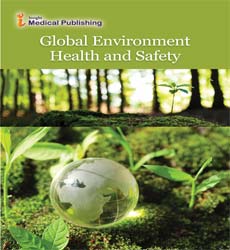Organic matter synthesized after the flow of ultra-pure, tap and sea waters through micro-orifices
Abstract
When passing ultrapure water (UPW*), tap water and sea water all of which are dissolving air through micro-orifices, we found that the flow velocity decreased and stopped over time and membranes were frequently formed in the orifice when the flow stopped. We identified the chemical components of the membrane and found those of UPW* and tap water different from the components present in the UPW* and the tap water themselves by using an electron probe micro analyzer. Raman and infrared (IR) spectroscopy showed that the membrane consisted of organic substances such as carotenoids, amides, esters and sugars. We irradiated UPW* with ultraviolet light to cut organic chains that may be left in UPW* as contaminants. We found a similar membrane and organic compounds as in no irradiated UPW*. Furthermore, no membrane was formed for the ultrapure water that was kept from contact with air after it was supplied from the ultrapure water-maker (UPW0) and bubbled with Ar gas (UPW0 bubbled with Ar). We found that the electric grounding of the orifice reduces the probability of membrane formation and that the jets issuing from an aperture bear negative charges and we assumed that the micro-orifices possess positive charges generated by flows. Similar membranes were found for ultra-pure water, tap water and sea water which dissolve air. Consequently, we suggest that organic compounds are synthesized from nonorganic matter in air dissolved in waters by the action of hydroxyl radicals generated by flows through micro-orifices.
Open Access Journals
- Aquaculture & Veterinary Science
- Chemistry & Chemical Sciences
- Clinical Sciences
- Engineering
- General Science
- Genetics & Molecular Biology
- Health Care & Nursing
- Immunology & Microbiology
- Materials Science
- Mathematics & Physics
- Medical Sciences
- Neurology & Psychiatry
- Oncology & Cancer Science
- Pharmaceutical Sciences
